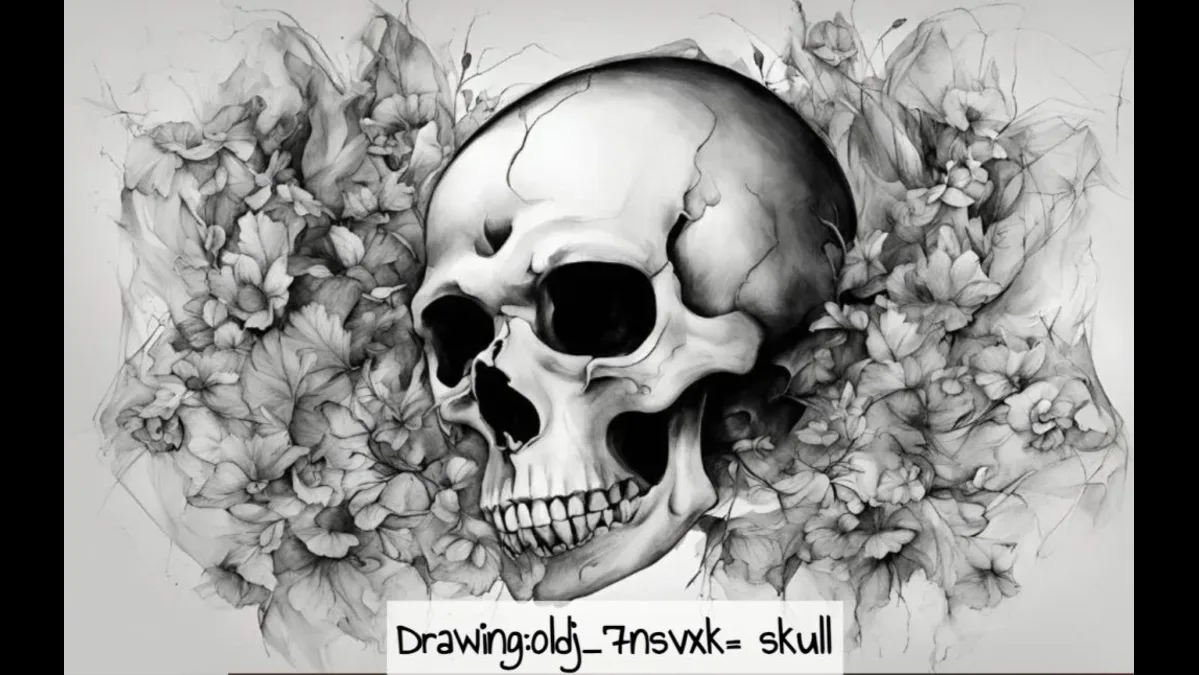Introduction to Understanding Proportions in Drawing
Drawing is a fascinating journey where lines come alive and shapes transform into expressive forms. Yet, amidst the allure of creativity lies a fundamental element that can make or break your artwork: proportions. Understanding how to capture the right dimensions is crucial for any artist striving to depict their subject accurately. Whether you’re sketching a figure, an object, or even something as intricate as a , drawing:oldj_7nsvxk= skull mastering proportion can elevate your art from simple representation to stunning realism.
But why do proportions hold such importance in drawing? With every stroke of your pencil, you’re not just creating; you’re communicating depth, perspective, and emotion through careful measurements and relationships between elements. In this guide, we’ll explore the essentials of proportions in drawing while uncovering tips on using the drawing:oldj_7nsvxk= skull as an invaluable reference tool. Get ready to enhance your artistic skills and unlock new potential!
Why Proportions are Important in Drawing
Proportions are the backbone of any successful drawing:oldj_7nsvxk= skull. They create a sense of realism and help convey accurate relationships between different elements in your artwork.
When you grasp proportions, you begin to see how various parts interact with one another. This understanding enhances depth and dimension, making objects appear more lifelike.
Incorrect proportions can lead to awkward compositions that feel off-balance or distorted. Artists often struggle with capturing the essence of their subjects when they overlook these vital measurements.
Mastering proportions allows for greater expression and creativity. You’ll find yourself unlocking new possibilities as your drawing:oldj_7nsvxk= skull become more coherent and visually appealing.
Whether depicting human figures or still life, proportion plays a crucial role in storytelling through art. It’s not just about mimicking reality; it’s about enhancing your artistic voice while maintaining structural integrity within your work.
The Golden Ratio and Its Impact on Art
The Golden Ratio, often denoted by the Greek letter phi (Φ), is a mathematical concept that has fascinated artists for centuries. This ratio creates aesthetically pleasing compositions through its unique proportions, approximately 1:1.618.
Many renowned artists have utilized this principle in their masterpieces. drawing:oldj_7nsvxk= skull For instance, Leonardo da Vinci’s “Vitruvian Man” exemplifies how the human form can embody this harmonious relationship between parts and wholes.
This divine proportion can be found in paintings, architecture, and sculpture. The Parthenon showcases symmetry rooted in the Golden Ratio, allowing it to resonate with beauty and balance.
Understanding this ratio provides artists with powerful tools to enhance visual impact. It encourages thoughtful arrangement of elements within a piece, guiding viewers’ eyes naturally across the artwork while evoking an emotional response.
Basic Principles of Proportions in drawing:oldj_7nsvxk= skull: Line, Shape, and Size
Proportions in drawing:oldj_7nsvxk= skull hinge on three fundamental principles: line, shape, and size. Each plays a crucial role in creating an accurate representation of subjects.
Lines serve as the building blocks of your drawing:oldj_7nsvxk= skull. The direction, thickness, and curvature can alter how we perceive forms. A gentle curve may suggest softness while sharp angles indicate tension.
Shapes help define objects within space. Understanding basic geometric shapes simplifies complex figures into manageable components. By breaking down a subject into circles, squares, or triangles, artists can easily maintain balanced proportions.
Size refers to the relationship between elements in your artwork. Establishing scale helps convey depth and perspective effectively. Ensuring that each component relates harmoniously allows for more realistic depictions.
Mastering these principles strengthens artistic skills and enhances overall composition quality significantly.
Using the Skull as a Guide for Proportion Practice
The skull is a remarkable tool for artists seeking to master proportions. Its distinct features provide clear reference points, making it easier to understand human anatomy.
Start by studying the overall shape of the skull. Notice how its structure influences facial proportions. This understanding can dramatically improve your ability to capture likeness in portraiture.
Focus on key landmarks like the eye sockets and jawline. drawing:oldj_7nsvxk= skull These elements serve as anchors for positioning other facial features accurately.
Practice sketching the skull from various angles. This helps build spatial awareness and enhances your ability to visualize three-dimensional forms on a two-dimensional surface.
Incorporating skull studies into your routine regularly will sharpen your skills over time. Use this timeless subject not just as a reference but also as an inspiration for exploring depth and character in your artwork.
Tips and Techniques for Improving Proportion Skills
Improving your proportion skills requires practice and observation. Start by using measuring techniques. A simple method involves holding a pencil at arm’s length to gauge distances between different elements in your drawing:oldj_7nsvxk= skull.
Focus on breaking down complex subjects into basic shapes. This approach simplifies forms, making it easier to see how parts relate.
Use reference images or real-life objects for more accuracy. Pay attention to the angles and relationships between features.
Regularly sketch from life, especially figures like skulls or human models. Observing these structures helps train your eye for proportion naturally over time.
Don’t forget about feedback; share your work with fellow artists or mentors who can provide constructive criticism. Engaging with other creatives often reveals new insights that enhance your skills significantly.
Common Mistakes to Avoid When Drawing Proportions
One common mistake artists make is focusing too much on details before establishing proportions. Jumping straight into shading or texture can lead to a distorted final piece.
Another pitfall is neglecting the relationship between different parts of the subject. For example, when drawing a skull, it’s crucial to pay attention to how the size of the jaw compares to the skull. Ignoring these relationships often results in an unbalanced drawing:oldj_7nsvxk= skull.
Many tend to rely heavily on intuition rather than using measuring techniques like comparative measurement or grids. This reliance can undermine accuracy and proportion.
Artists may overlook practice with basic shapes. Proportions are built upon simple forms; mastering them lays a solid foundation for more complex subjects later. Remember that improving your skills takes time and patience—embracing this journey will yield better results in your artwork!
Conclusion: Unlocking Your Potential as an Artist Through Understanding
Understanding proportions in drawing:oldj_7nsvxk= skull opens up a world of possibilities for artists. Mastering this fundamental concept can elevate your work from basic sketches to compelling pieces that resonate with viewers. The skull, often regarded as the foundation for studying human anatomy, is an excellent tool for honing these skills.
As you practice with various techniques and tips shared throughout this article, remain mindful of common pitfalls. Each sketch is an opportunity to learn and grow. By applying the principles of proportion consistently, you’ll find your artistic voice becoming clearer over time.
Embracing the beauty of proportions enhances your artwork and builds confidence in your abilities as an artist. This journey towards understanding will unlock new dimensions in creativity that you may have never realized before. Keep exploring and pushing boundaries—you are on a path to discovering your full potential.




